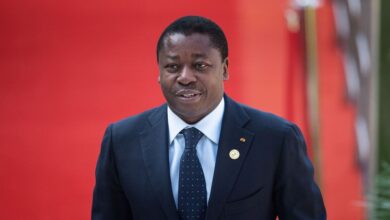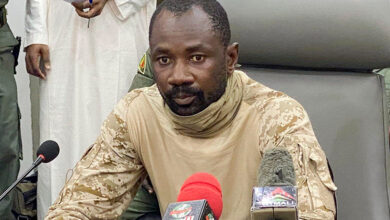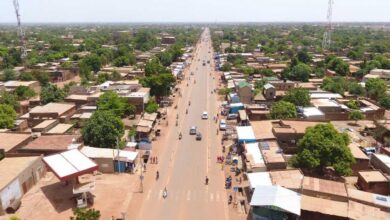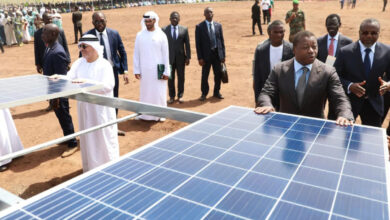Togo
Togo, in long form the Togolese Republic, is a West African country whose population is estimated in 2020 to be around 8.6 million inhabitants with a density of 152 inhabitants / km2. Among the smallest continental African states, Togo is 9th with an area of 56,785 km2, stretching over approximately 700 km from north to south with a width not exceeding 150 km, limited to the north by Burkina Faso, at south by the Gulf of Guinea, east by Benin and west by Ghana. Togo presents a great diversity of landscapes: a sandy coast bordered by coconut palms in the south, hills, green valleys and small mountains in the center of the country, arid plains and large savannas planted with baobabs in the north. Togo has been part of the Economic Community of West African States (ECOWAS) since 1975, of UEMOA since 1994 and is a member of the Organization of Islamic Cooperation.
Togo’s history
Togo takes its name from Togodo (which originally means town “beyond the river” in the Ewe language and not town “beyond the river”, a common mistake). Today Togoville, a Germanic colonial city and the country’s first capital, is located east of the capital Lomé.
Colonial era
Togo suffered from the slave trade that it suffered from the trade links between western slave traders and tribal kings from the sixteenth century before colonization put an end to it in the nineteenth century. In 1884, King Mlapa III of Togoville signed a protectorate treaty with Germany (represented by Gustav Nachtigal), which lasted until the First World War.
In 1914, during the First World War, a joint Franco-British operation came into contact with the German force. A troop of the public force of the Belgian Congo also helps the French and the British. The Germans capitulated in August 1914 and were expelled. The colony was then occupied jointly by France and the United Kingdom who shared the territory, a decision confirmed on July 10, 1919, and which made Togoland a mandate of the League of Nations (SDN). The French occupy most of the country, which becomes French Togo or eastern Togoland, and which is equivalent to present-day Togo, while the British administer the western part of the country, British Togo, also called British Togoland. Although the two parts of the original Togoland were to be administered with a view to reunification, the French and the British incorporated the mandates in their respective colonial spheres. The French part is attached to French West Africa (AOF), the British part becomes a province of the Gold Coast. In 1946, the country came under international supervision of the United Nations, still managed by France. French Togo is detached from the AOF. He obtained his own representation in the French Parliament and became the Autonomous Republic of Togo. In 1956, British Togo opted, in a self-determination referendum, for its integration into Ghana, the former Gold Coast. This connection was ratified by the United Nations in 1958 at the cost of the division of certain ethnic groups, or even certain families.
Independence
In February 1958, the victory of the Togolese Unity Committee in the elections paved the way for complete independence of the country, confirmed six months later by the lifting of the country’s supervision by the United Nations. Togo acquired full independence on April 27, 1960. Previously, internal autonomy dates back to August 30, 1956, with the establishment of the Autonomous Republic of Togo. Sylvanus Olympio becomes president. At the instigation of French commander Georges Maitrier, chief of the national gendarmerie and adviser to the president whose cooperation contract is coming to an end, 626 Togolese veterans of the French army, many of whom fought in Indochina and Algeria, ask to be integrated into the Togolese security forces which have 300 members. Sylvanus Olympio refuses. They deposed him in a coup on January 13, 1963, in which Olympio died. In addition, before his assassination, Sylvanus Olympio had an important project, that of withdrawing Togo from the CFA franc. Nicolas Grunitzky is brought to power. He signs “cooperation agreements” with France, allowing France to use strategic resources at its convenience. Four years later, after another coup, he fled the country. He died on September 27, 1969 in Paris in a car accident. Kléber Dadjo is temporary president of Togo from January 14 to April 14, 1967. Colonel, he is presented as the head of the military junta which takes power on January 13, 1967 in Lomé. He was deposed himself by Sergeant Gnassingbé Eyadema, who imposed a dictatorship in Togo for almost four decades, from 1967 to 2005. His son Faure Gnassingbé succeeded him as president, a situation confirmed by elections (whose regularity is disputed) in 2005, 2010, 2015 and 2020.
Togo’s politics
Sylvanus Olympio
Sylvanus Olympio is the first Togolese president but he quickly establishes a dictatorship with a single party which allows him to win all the seats in the legislative elections of 1961. He is killed during the coup of January 13, 1963. Coup claimed by Gnassingbé Eyadéma, the father of the current president.
Nicolas Grunitzky
Former Prime Minister Nicolas Grunitzky becomes President of Togo following this coup, the first in the history of black African independence, organized by a group of soldiers led by Sergeant Étienne Gnassingbé Eyadema. Nicolas Gruniztky, favorable to a rapprochement with France, was dismissed by a new coup in 1967 where we find Étienne Gnassingbé Eyadema.
Kléber Dadjo
Kléber Dadjo is a colonel in the army of the Togolese Republic, he was appointed president of Togo from January 14 to April 14, 1967 following the 1967 coup that overthrew Nicolas Grunitzky.
Gnassingbé Eyadema
One of the organizers of the 1963 coup, Étienne Gnassingbé Eyadema took over the presidency of the Republic in 1967. Drawing lessons from the divisions observed within the framework of a multiparty system, he created the Rassemblement du Peuple Togolais (RPT), a unique party and state. A new constitution, in 1979, established the Third Republic and gave power to the president by election by universal suffrage. He was then re-elected in 1986. In 1990, following violent demonstrations, followed by a national conference, a Prime Minister from the opposition, Mr. Joseph Kokou Koffigoh, was appointed. The adoption of a new constitution in 1992, however, did not ease tensions. In 1993 Eyadema again won the presidential boycott by the opposition. Gnassingbé Eyadéma is close to defeat, in the 1998 elections, against Gilchrist Olympio, son of Sylvanus Olympio. He won the election under very controversial conditions. Gnassingbé Eyadéma was re-elected in 2003 following a change in the constitution to allow him to run again. He died on February 5, 2005.
Abbas Bonfoh
Abbas Bonfoh was the vice president of the National Assembly of Togo from 2002 to 2005. On the death of Gnassingbé Eyadéma and in the absence of the president of the National Assembly, he became acting president of Togo until the taking of according to Faure Gnassingbé on May 4, 2005.
Faure Gnassingbé
Following the death of Gnassingbé Eyadéma and in the absence in the country of the president of the National Assembly who, according to article 65 of the Constitution, must ensure the interim of the presidency, the Togolese army, in front of the vacuum created by the situation, takes the decision to entrust power to the son of Gnassingbé Eyadema, Faure Gnassingbé. The African Union, through the president of the Commission Alpha Oumar Konaré, denounces a military coup. He is nicknamed, according to Alain Mabanckou and Abdourahman Waberi, “baby Gnass”. On February 25, 2005, following pressure from ECOWAS and the European Union, Faure Gnassingbé retired and gave way to the Vice-President of the National Assembly of Togo: Abbas Bonfoh. The latter ensures the interim of the presidential function until the holding of the presidential election of April 24, 2005. Faure Gnassingbé, wins the election with 60.22% of the votes cast, result which triggers demonstrations of young people of the opposition.
In 2010 will be organized presidential elections without violence where President Faure Gnassingbe is reelected with 61% of the vote against Jean-Pierre Fabre, of the UFC, candidate of the opposition coalition Front Républicain pour le alternance et le change ( FRAC). Clashes took place in protest at this election between militants of the coalition and the police. The elections were denounced by the European Union, funding the elections, which through its observers noted irregularities in the electoral campaign. Faure Gnassingbé was re-elected again in the April 2015 presidential election, with 58.75% of the votes cast, compared to 34.95% for his main opponent Jean-Pierre Fabre. An election deemed free and transparent by the EU and the main international observers. The abstention amounted to 40.01%, against 35.32% in the previous presidential election in 2010. On the opposition side, Tchabouré Gogué, president of the Alliance of Democrats for Integral Development (ADDI), obtained 3.08% of the vote, Komandega Taama, president of the New Togolese Commitment (NET), 1.06%, and Mouhamed Tchassona-Traoré, president of the Citizen Movement for Democracy and Development (MCD, opposition), 0.99 %. He appoints Prime Minister Komi Sélom Klassou on June 5, 2015 until then first president of the National Assembly. Faure Gnassingbé is running for a fourth term in the presidential elections of 2020. He is renewed and the election is contested once again by the opposition.
National development plan 2018-2022
Adopted by the Togolese government on Friday, August 3, 2018, the National Development Plan (PND) is a five-year strategic document covering the period 2018-2022. It aims to structurally transform the Togolese economy for strong, sustainable, resilient, inclusive growth, creating decent jobs for all and inducing the improvement of individual well-being. This plan revolves around three main strategic axes: The establishment of a logistics hub of excellence and a first-rate business center in the sub-region. The development of agricultural processing, manufacturing and extractive industries. Consolidation of social development and strengthening of inclusion mechanisms.
The PND was officially launched on Monday March 4, 2019 by the Head of State Faure Gnassingbé in Lomé, in the presence of foreign and national investors, donors and diplomatic partners. Regarding the National Development Plan, the Togolese President said: “It is not just another plan. Nor is it a tool for theorists who would be the only ones able to talk about it. […] The PND is formulated in an inclusive and coherent approach, whose web remains the search for better living conditions for our populations ”. Among the development plan projects launched by President Faure Gnassingbé, we can cite the ambitious electrification project and the repair of 4,000 km, aimed at opening up rural areas in Togo. This launch event also marks the start of the National Development Plan, the PND Tour. One of the consequences of the National Development Plan is the jump of Togo in the Doing Business 2020 ranking of the World Bank where the country obtains the title of “1st reforming country in Africa” and “3rd in the world”. The PND and the establishment of the various mechanisms would make it possible, by 2022, to accentuate the trend of economic development in Togo. This project is the spearhead of Faure Gnassingbé’s program and her vision for her country.
Togo’s economy
Togo’s economy is essentially based on food crops, which represent the activity of 65% of workers. The rest of the workforce (30%) lives from the cultivation of cocoa, coffee, cotton but above all from the phosphate mines which are vital to the country. Togo is the fifth largest producer of phosphates in the world. The country was among the top seven African cotton producers in the mid-2010s. Like many African countries (Senegal, Mauritius, Namibia), Togo has had a free zone since the end of the 1980s. Thus, in this zone are located pharmaceutical companies, manufacturers of vegetable oils, computer assemblers, distributors of cosmetic products, dental technicians or road transport companies… Since the start of the conflict in Côte d’Ivoire, Togo has become a very important port platform for operators in West Africa. The port of Lomé, the only deep-water port in the sub-region, is therefore a free zone which continues to develop rapidly. Containerized traffic (by container) in Lomé doubled in three years to reach 212,000 TEUs (equivalent to twenty feet) in 2005.
For example, the autonomous port of Lomé (PAL) just acquired in March 2006 two port cranes which have a lifting force of 104 tonnes. This equipment is intended to support the extension and operation of the terminal, which is experiencing rapid regional expansion and covers the needs of many countries such as Niger, Mali and Burkina Faso. This project will accommodate large vessels and thus attract transhipment flows, especially those from Asia. In 2019, the PAL was awarded “best transshipment hub in West Africa” for the third consecutive year. Togo is part of the Economic Community of West African States and the West African Economic and Monetary Union SNCB is present in: domestic passenger transport in sub-Saharan Africa, carried out as part of the public service; international passenger transport by conventional trains, or by high-speed trains. In 2011, France canceled the debt of Togo in the amount of 100 million euros.
Togo’s demography
According to the final results of the 4th general census of population and housing (RGPH), communicated in 2010 by the director general of statistics and national accounts (DGSCN), the total resident population of Togo amounts to 6 191,155 inhabitants including 3,009,095 men (48.6%) and 3,182,060 women (51.4%). In 2015, it was estimated at 7.5 million inhabitants, with an average density of 133 inhabitants / km2. Its annual growth rate is estimated at 2.69%, the infant mortality rate rising to 45.2 ‰. Life expectancy is estimated at 64.5 years. In 2015, 40% of the population lived in cities. In 2017: Lomé: 2,133,579 inhabitants; Sokodé: 104,708 inhabitants; Kara: 108,708 inhabitants; Kpalimé: 84,984 inhabitants; Atakpamé: 77,284 inhabitants; Bassar: 64,888 inhabitants; Tsévié: 58,090 inhabitants; Aného: 49,716 inhabitants; Mango: 39,568 inhabitants; Dapaong: 34,178 inhabitants.
Togo’s education
Law: free education for pupils in pre-school and public primary schools (back to school 2008-2009). In terms of primary education, the net enrollment rate of 94% in 2011 is one of the best in the West African sub-region. Regarding the gender parity, it is on a satisfactory trend at the primary level (0.95 in 2008).
Togo’s languages
The official language of Togo is French. The two national languages are Ewe and Kabiyé, the latter two adopted as such in 1975. There are also 53 languages in Togo, including Mina (dialect of Ewe spoken in Lomé) which is used mainly in the lingua franca. South of the country, but also across almost the whole country: the mobaa, the tem and the Peul. The vernacular languages of the country are divided into two groups: the Gur languages in the north and the Kwa languages in the south. If the local languages are mainly oral, the Ewe, Moba and Kabiyé languages are also written. According to the 2014 OIF report, Togo has 39% Francophones in its population. Mostly, ewe is practiced south of Lomé in Blitta and kabiyé in the north. The language most spoken by Togolese at home is Ewe according to a 2012 survey. According to Suzanne Lafage: “The notable fact of the past fifteen years is linked to all the factors of development and thanks to schooling in particular, the notably expanding dissemination of our language [French] among the masses. The consequence is an appropriation of French by the little or not literate, a phenomenon practically unknown in the past. ” According to Isabelle Anzorge “This one [French] is no longer just an” imported “language but is gradually taking on a Togolese identity, freeing itself from all normative constraints, thereby integrating the cultural realities of the country. “The author noted the existence of dialectal French:” (…) since the drop in the schooling rate due to the various economic and political upheavals (phosphate collapse, devaluation of the FCFA, university strikes following the general strike of 1992, climate of civil war since 1991), French become a tool, even a privileged means of communication of the majority of the Togolese educated or not.
-
Ivory Coast

Togolese President Gnassingbe In Mali As Efforts To Free Ivorian Soldiers Increase
Togolese President Faure Gnassingbe, who is acting as a mediator in a diplomatic row between Ivory Coast and Mali over…
Read More » -
Ivory Coast

Togolese Government Begins Mediation On Detained Ivory Coast’s Soldiers
Togolese Foreign Minister Robert Dussey on Tuesday met Ivory Coast’s officials in Abidjan for talks on 49 Ivorian soldiers who…
Read More » -
Togo

Togo’s Army Accepts Responsibility For Blast That Killed Seven Innocent Civilians
Togo’s army on Thursday accepted that it was responsible for a blast that killed seven civilians and injured two more,…
Read More » -
Togo

Togo Inaugurates West Africa’s Largest 50 Megawatt Solar Plant In Blitta
Togo on Tuesday inaugurated West Africa’s largest solar plant, which is located some 250 km north of capital city Lome,…
Read More » -
Togo

Togo Election: Constitutional Court Declares Faure Gnassingbe As Winner
Togo’s Constitutional Court on Tuesday declared Faure Gnassingbe as the winner of February’s presidential election, reported The New York Times.…
Read More »

